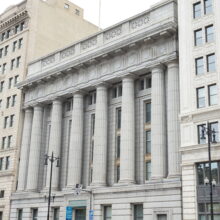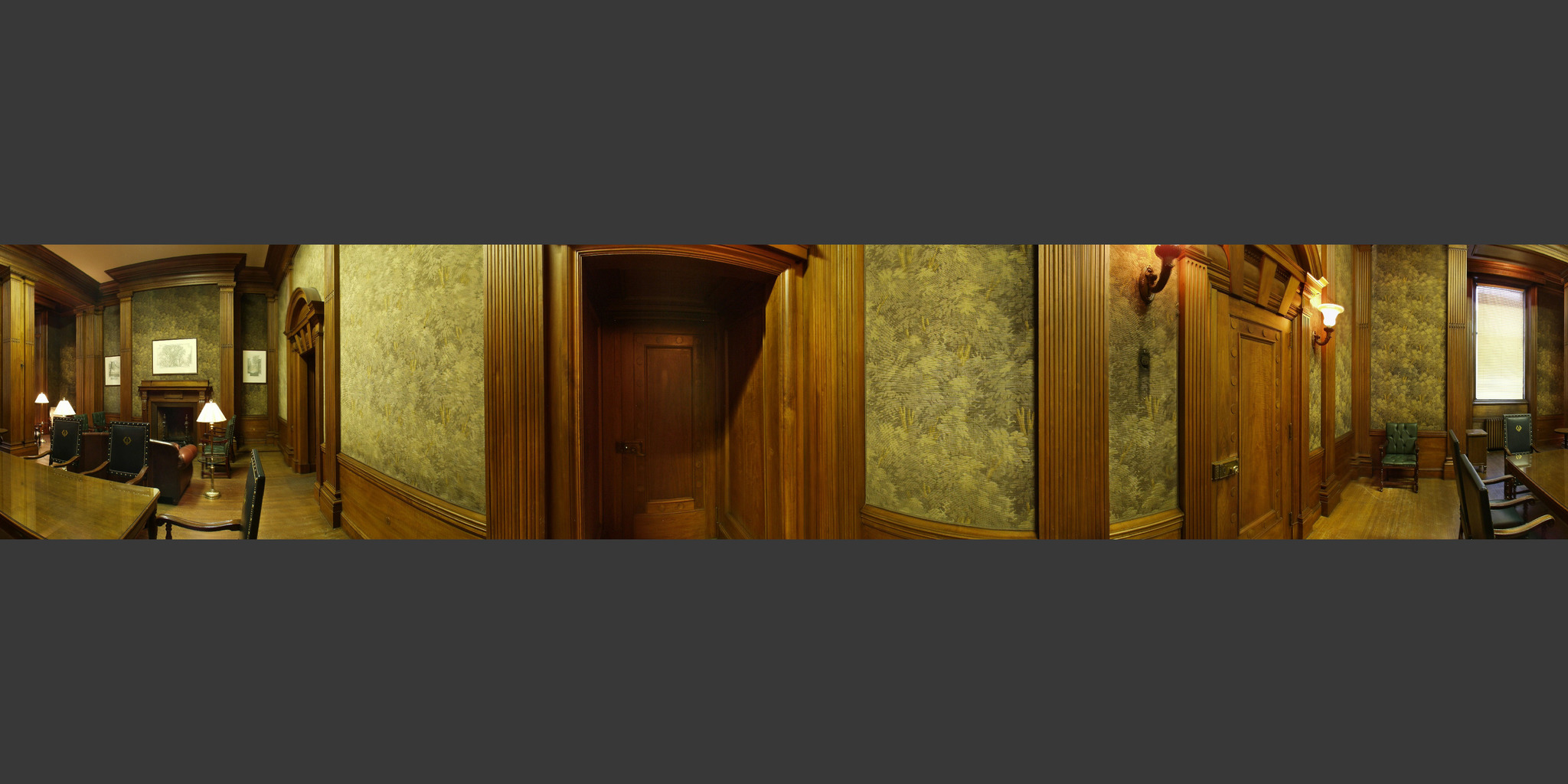Winnipeg – Bank of Commerce (Millennium Centre)
Lining Winnipeg’s Main Street are a series of ornate and expensive banking halls dating back to the 1910s, to a time when Winnipeg was one of the wealthiest and fastest growing cities in Canada. One the largest banks, built in 1910 and still standing today, is the Bank of Commerce.
The Bank of Commerce tells a story not just of the financial growth of Western Canada, but of determination and heritage conservation in Winnipeg.
The Bank of Commerce, like many other banks, arrived in Winnipeg in the 1890s to take advantage of the rapidly growing economy. Lacking the capital to build their own structure, the Bank of Commerce rented out space in the Bannatyne Block – a lot they would remain on until 1969. The growth of the bank allowed them to buy out the Bannatyne Block in 1899, demolish it, and replace it with their first official banking hall. This would be a glamorous Beaux-Arts structure, befitting the grandeur of Winnipeg’s Main Street. By this point, a stretch of Main Street between Portage Avenue and City Hall was full to the brim with banks – each trying to outdo the others in terms of opulence and style. The Bank of Commerce fit right in, and helped establish the area as “Bankers’ Row”.
Continued success meant the bank outgrew their second building by 1906. They had it dismantled and shipped off to Regina, Saskatchewan – where the façade still stands today. The Bank of Commerce purchased additional property near their existing and newly vacant lot to make way for the new structure, and hired popular Toronto architects Darling and Pearson to design the space. Drawing on the neoclassical style, the new bank included the best features of all the architect’s previous Bank of Commerce designs. No expense was spared, and generous amounts of Italian marble, plaster and oak were used to decorate the interior. Considered one of the finest banking halls in Winnipeg upon it’s opening in 1910, the bank used largely Canadian sourced materials in the construction for a grand total of about $750,000.
The bank would flourish for some time, building off of Winnipeg’s grain and wholesale trade and using their Main Street location as their headquarters for the entire western region. The Bank of Commerce became the Canadian Imperial Bank of Commerce and remained in the space until 1969, when they moved into a new office tower next door, leaving the 1910 structure vacant.
Urban development in Winnipeg had slowed significantly from the 1930s to the 1960s, and in a push for urban renewal many historic buildings in Winnipeg’s downtown were demolished. By the mid-1970s the Bank of Commerce was being considered for demolition, with the intention of building a surface parking lot in its place. In 1978, concerned locals took to Main Street to protest the demolition order and convinced the City of Winnipeg to spare the building.
The aftermath of the fight to save the Bank of Commerce brought on significant changes in heritage conservation in Winnipeg. In 1978, the City of Winnipeg, Province of Manitoba, and Heritage Canada (now the National Trust for Canada) created Heritage Winnipeg to advocate for the protection of historic buildings and act as a watchdog over potential concerns or threats. This same year, the City of Winnipeg established its Heritage Bylaw to protect other buildings at risk. In 1979, the Bank of Commerce received municipal heritage designation, effectively saving it from later demolition. The saving of the Bank of Commerce acted as a catalyst for the protection of other heritage buildings in the Exchange District, which was designated a National Historic Site in 1997.
Ultimately, though, while the building was spared there was no still interested tenant available and the building would remain vacant until 2000. MarWest Management, who had owned the Bank of Commerce for some time, would donate the building to a non-profit volunteer organization, with the aim of conserving and renovating the building for future generations. This process would not have been possible without the financial support of philanthropists Bill and Shirley Loewen. Newly renamed the Millennium Centre, the Bank of Commerce now stands as a monument to Winnipeg’s former wealth – and to the efforts of Winnipeg’s heritage activists.


















 Tapestry Room
Tapestry Room
 Banking Hall
Banking Hall